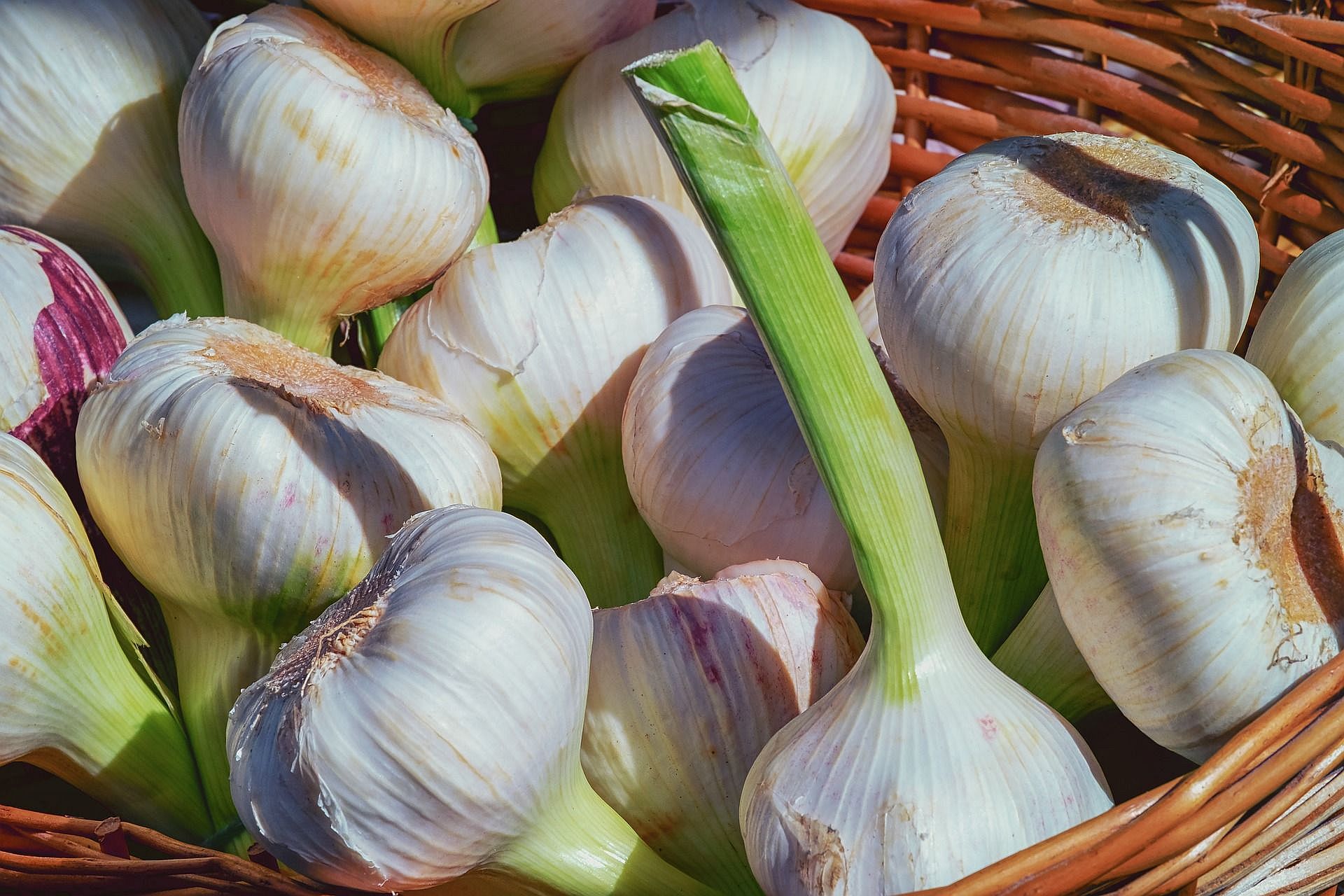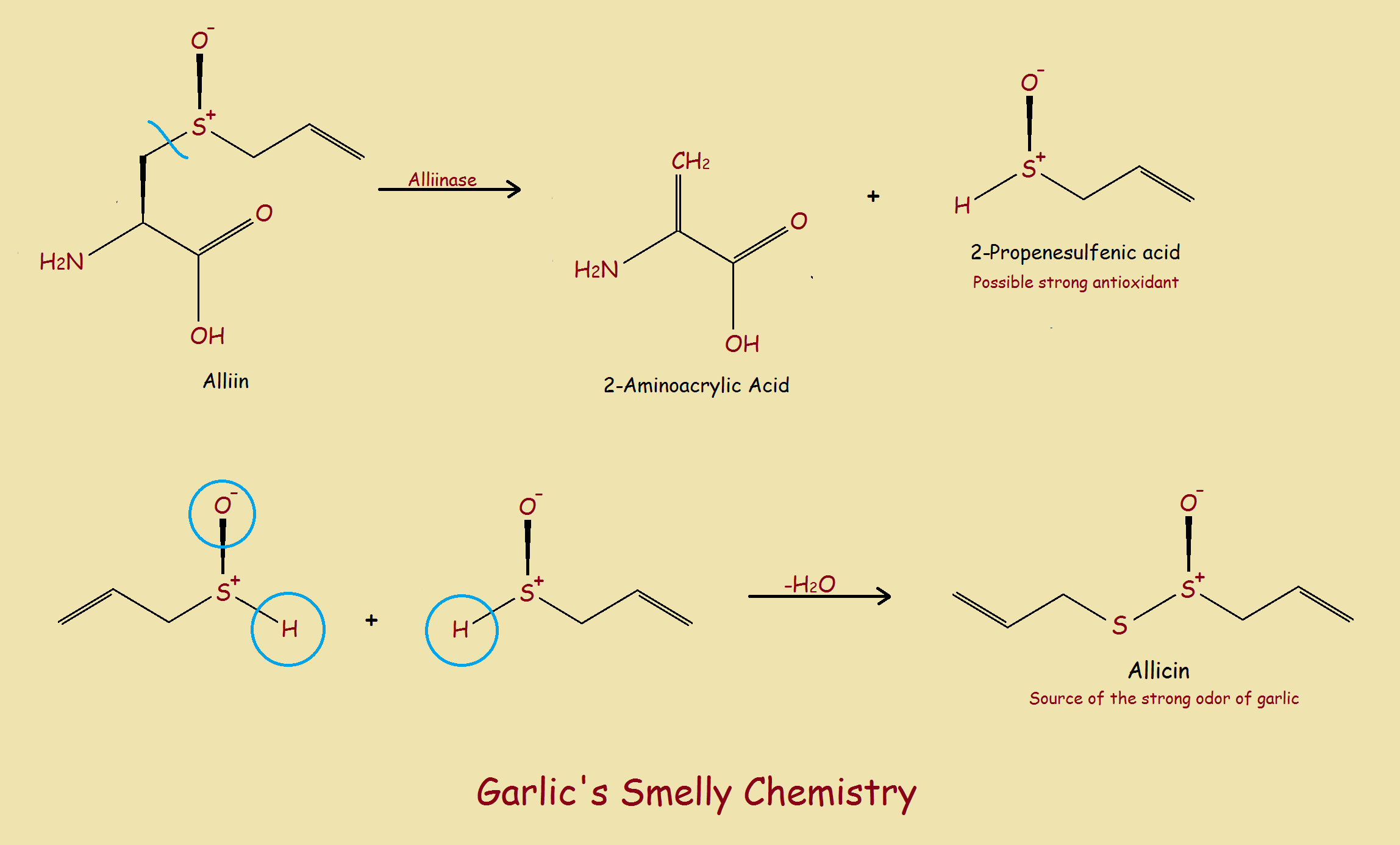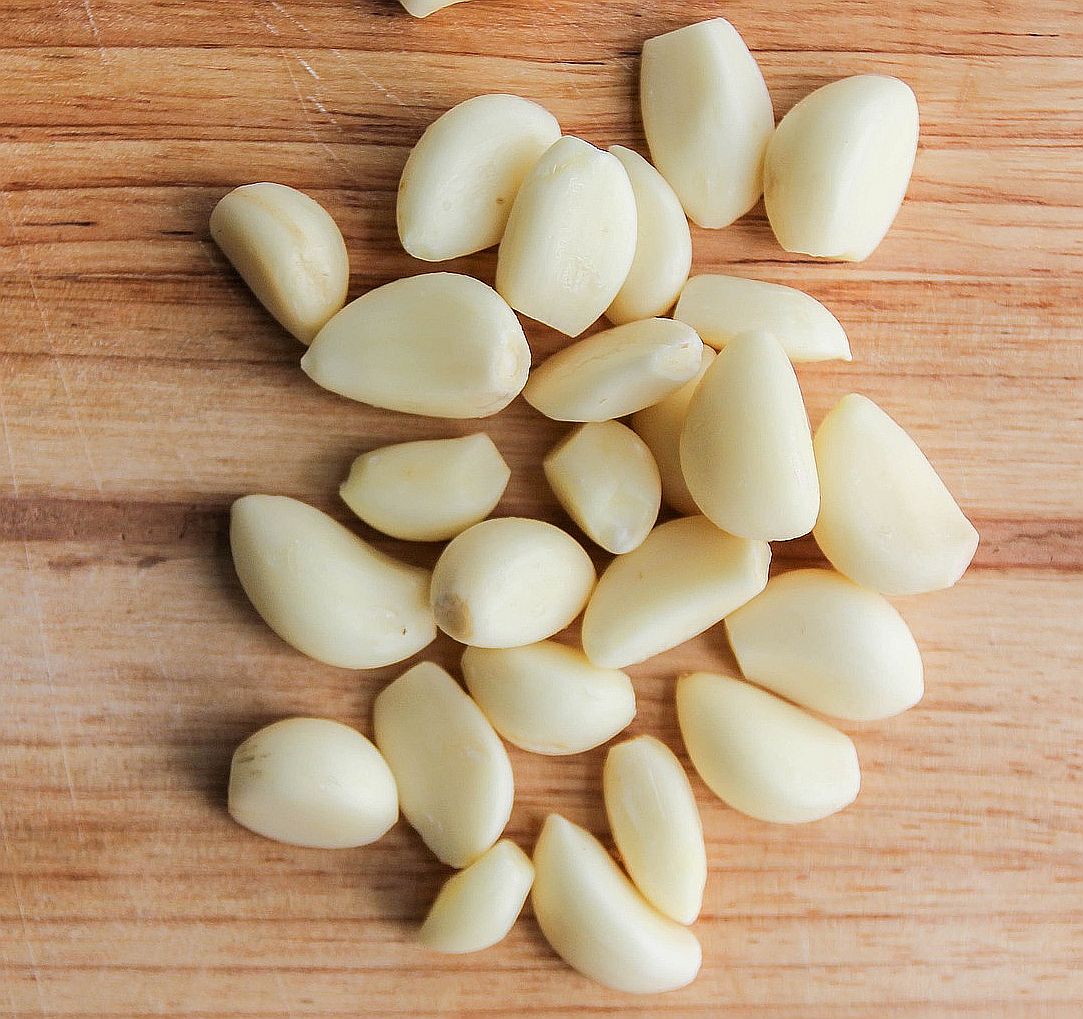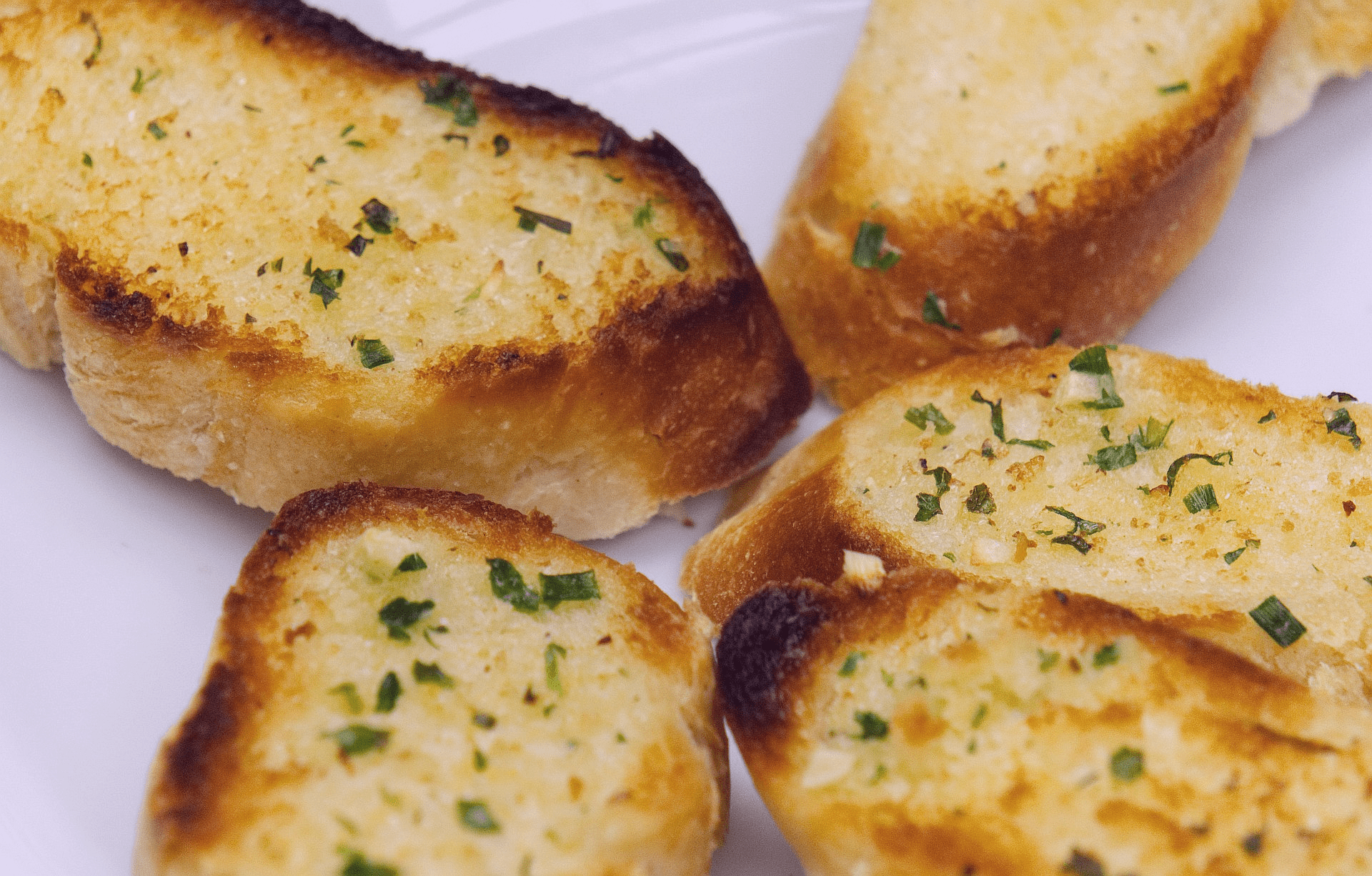
Garlic Question
Since the odor of a clove of garlic is pretty nearly non-existent, it must be wondered: Why does garlic produce so noticeable an odor when it is crushed? It is because the odor is produced by a chemical reaction, the combining of two substances within the garlic.
The Two Substances
The two substances are alliin and alliinase. Whenever the suffix part of a compound name ends in -ase, suspect an enzyme. Perhaps you’ve heard of laundry detergents that are said to be “enzyme cleaners”. What is an enzyme?
An enzyme is a biological catalyst. That is, it speeds up a specific chemical reaction within a biological system. What is the reaction for garlic? It involves the compound alliin (see image).

Allin and alliinase are isolated from each other in garlic cells. Slice or crush the garlic and the two come into contact. The reaction is rapid. Allicin and its pungent aroma are quickly noticed!
Allicin’s Good Qualities
Garlic component has some good qualities, whether or not one enjoys it. Allicin, the component that “speaks” most loudly to us, is both a) antibacterial and b) antioxidant.
As an antibacterial or antimicrobial, it discourages harmful bacteria in the intestinal tract (see first reference). The benefits of such behavior is apparent. But what is an antioxidant, and how is that beneficial?
Search for the definition online and you will find many definitions that seem different, one from the other. The following definition seems clear and concise… The National Cancer Institute defines antioxidant https://www.cancer.gov/publications/dictionaries/cancer-terms/def/antioxidant as: “A substance that protects cells from the damage caused by free radicals (unstable molecules made by the process of oxidation during normal metabolism).”

Food, Metabolism, Oxidation, Antioxidant
When we eat food, it must be digested and converted. The result is nutrients and energy for the body’s use, plus waste products for elimination. Such metabolism requires oxygen – oxidation. Do we want to fight against this desirable process with an antioxidant?
Clearly that is not the case. However, there is one aspect of oxidation that current medical thinking considers undesirable. The production of “free radicals” alluded to in our definition. What precisely is a free radical?
Free Radicals
A free radical is an uncharged molecule (in other words, not an ion) that has an unpaired valence electron. Generally, when a bond is broken to produce two ions, one takes both of a pair with it while the other takes none. Thus…
A:B → A: + B
or
A:B → A + :B
In some situations, an ion is not produced, but the splitting of the pair of electrons, results in something like this…
A•
or
B•
For further insight on the topic of free radicals in connection with oxygen, I heartily recommend the article Free Radicals and Reactive Oxygen by Vivo Pathology – Colorado State University.

The antimicrobial and antioxidant benefits resulting from allicin appear to be clear. So it may behoove the reader to include at least a little garlic in his or her diet for its beneficial properties, even if he or she is not “fond of the “stuff”.
Cancer and Garlic?
There is considerable interest in garlic with regard to reducing the likelihood of cancer. The notion is not proven, but here is an encouraging video, with some academic weight behind it…
Note: You might also enjoy Cooking Onions: Flavor Chemistry Changes
References:
← Back to Food and Health
← Home
